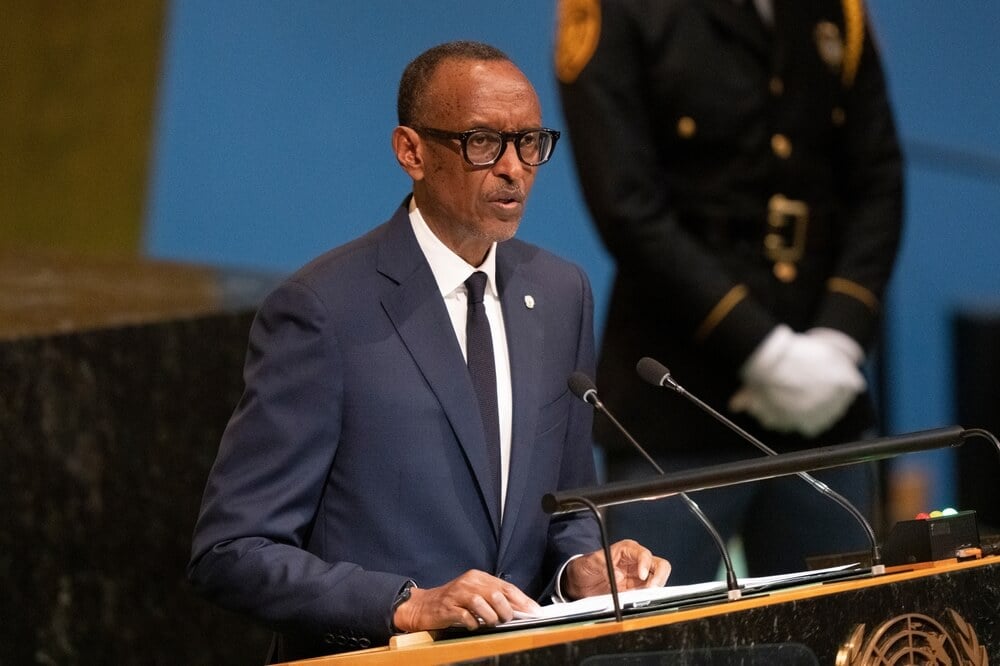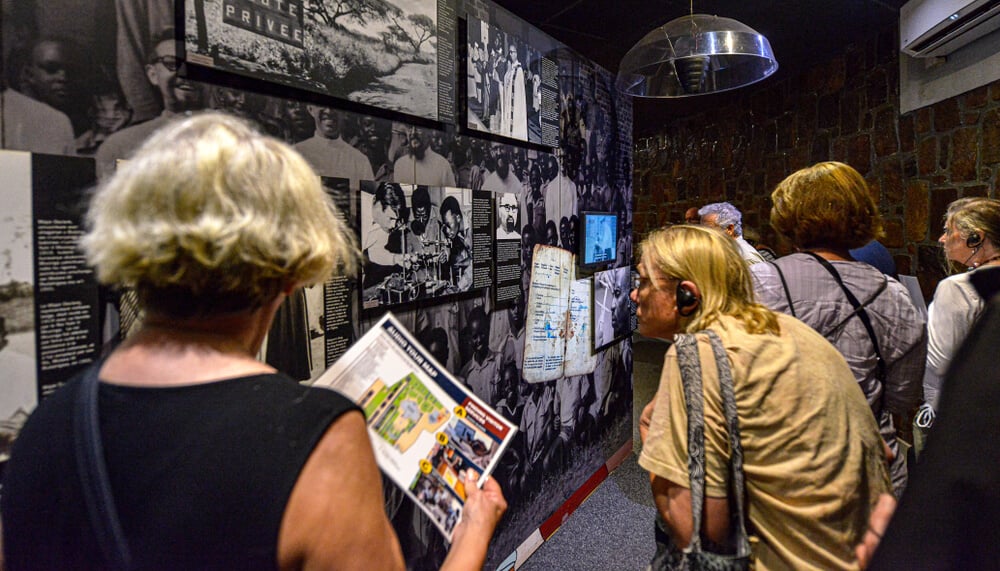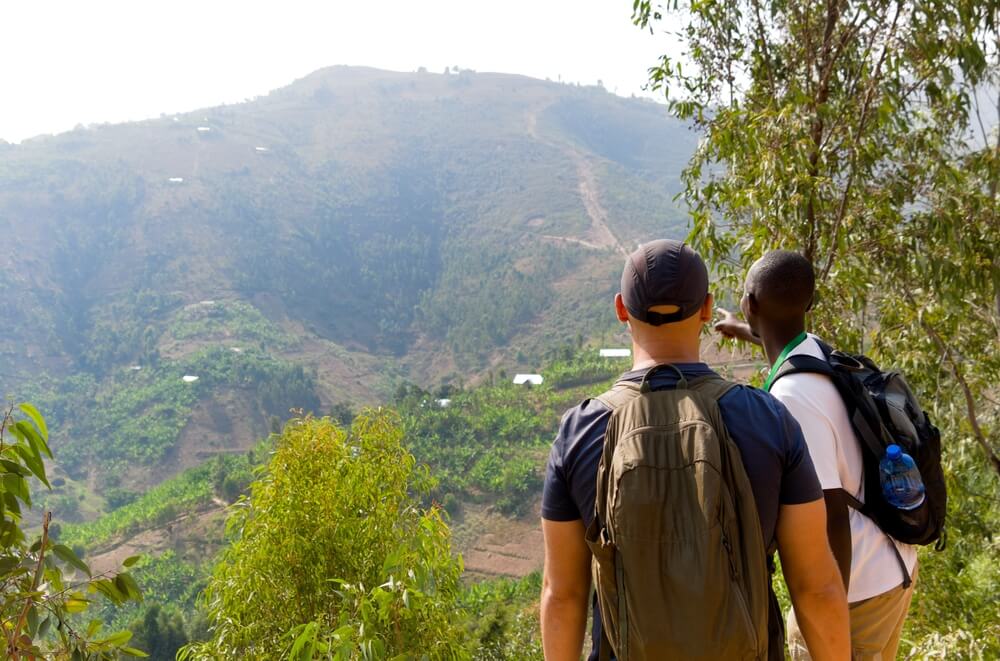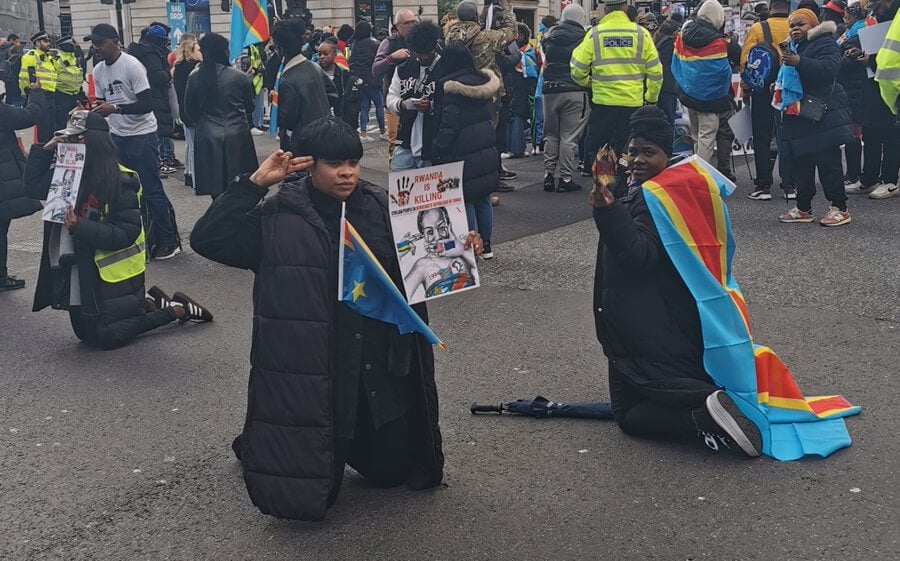Tantalum is an important element, but it is possibly not known to many people.
However, without tantalum, our everyday existence might be very different from what we are familiar with.
On the other hand, it has a dark secret to which we may be complicit. It is a ‘conflict mineral’. Maybe we should be concerned.
What is tantalum?
The Royal Society of Chemistry describes tantalum as a “shiny, silvery metal that is very resistant to corrosion”.
Anders Ekeberg, a Swedish chemist, discovered it in 1802 and named it ‘tantalus’ after the Greek mythological King Tantalus.
The metal’s resistance to acid, reminded Ekeberg of King Tantalus’ inability to experience the drinking of water as punishment by the gods for misdeeds.
However, being chemically very similar to niobium, tantalum was not produced in a pure form until 1903.
Tantalum might be unknown to us consumers, but what would our everyday be like without our mobile phone, laptops and other electronic devices?
One of its significant uses is in tantalum capacitors. These have higher performance capabilities than other forms of capacitor, which makes them valuable components in electronic devices, in particular, where miniaturisation is important.
In other words, they are to be found in the electronic devices of our everyday existence, e.g. mobile phones, laptops and digital cameras.
Tantalum might be unknown to us consumers, but what would our everyday be like without our mobile phone, laptops and other electronic devices?
Tantalum has a source
The aspect of tantalum that is of concern relates to its sourcing. Tantalum is extracted both as a by-product of smelting tin ore (cassiterite), and as a ‘concentrate’ ore from the columbite-tantalite mineral group, known as ‘coltan’, with Tantalite being the tantalum-rich member of this group.
The world’s largest suppliers of tantalum are the Democratic Republic of Congo (DRC) and Rwanda. However, there is an underlying concern with this claim.
The statistics provide by the International Trade Centre (ITC) for the classification ‘2615’ which includes tantalum ores and concentrates, suggests that Rwanda is the bigger producer (extraction) and exporter:
· Exports from Rwanda: 963 tons (2020), 1,046 (2021), n/a (2022), 2,030 (2023 est.), 2,930 (2024 est.)
· Exports from DRC: 768 (2020), 499 (2021), 905 (2022), 873 (2023), 1,163 (2024 est.)
Ecofin Agency provides more specific statistics, reporting that whilst DRC exports of coltan exceeded that of Rwanda in 2020 to 2022, in 2023, Rwanda exported 2070 tons, whilst DRC exported 1918 tons.
Notable, is the mismatch of figures with those of the ITC, which includes other ores and concentrates.
Within DRC, much of the coltan is extracted in DRC’s eastern provinces North and South Kivu by means of artisanal mining.
Within Rwanda, it is unclear where and how much coltan is extracted, with the Rukaragata Mine in the Ngororero district presented as an integrated opencast extraction and ore processing facility.
Its output is a granular concentrate that is then shipped to Bugesera (Eastern Province) for refining into tantalum. The ITC statistics for imports into Rwanda and DRC are:
· Imports into Rwanda are zero.
· Imports from DRC are zero
The question raised is - where is the Rwandan tantalum sourced from other than the Rukaragata Mine?
There is concern that the ore coltan, along with gold from DRC’s eastern provinces, is being illegally acquired by the militias operating in these eastern provinces and used to fund their activities, with the minerals being smuggled into Rwanda.
ENACT reveals a complex operation involving both formal actors and informal actors (e.g. criminal networks involving artisanal miners, local dealers, mining companies, officials and trading posts), supported by ‘security agents’, (e.g. police, soldiers, armed groups).
Indeed, the International Tin Association have expressed concern about the lack of transparency in the transfer of tantalum from DRC to Rwanda, recognising the current role of the M23 militia in this.
 Some people come from Congo whether they smuggle or go through the right channels, they bring minerals, but most of it goes through here, does not stay here, it was to Dubai, it goes to Brussels, it goes to Tel Aviv, it goes to Russia - Paul Kagame
Some people come from Congo whether they smuggle or go through the right channels, they bring minerals, but most of it goes through here, does not stay here, it was to Dubai, it goes to Brussels, it goes to Tel Aviv, it goes to Russia - Paul Kagame
Nevertheless, this is not a new concern, with minerals being traded for weapons as far back as 1996 and the start of the First Congolese War.
In response to accusations that Rwanda is stealing Congolese coltan and gold, Rwanda’s President Paul Kagame stated: “Some people come from Congo whether they smuggle or go through the right channels, they bring minerals, but most of it goes through here, does not stay here, it was to Dubai, it goes to Brussels, it goes to Tel Aviv, it goes to Russia, it used to go to Russia, I don't know if it still goes there, It goes everywhere.”
This is a clear admission of Rwanda being used as a transfer point for Congolese metals into the rest of the world.
The fundamental issue is the transparency and ‘due diligence’ in the identification of ‘conflict minerals’ used to fund conflict.
It has led to legislation requiring ‘due diligence’ being introduced in the US in 2010, and the EU in 2016, though more globally applicable guidance was provided by the Organisation for Economic Co-operation and Development (OECD) in 2011.
One implication for traceability is through certification. However, whilst the Congolese ‘Certification, Expertise and Evaluation Centre’ (CEEC) is responsible for certifying coltan, there is the challenge of implementation and enforcement due to lack of resources.
A legacy of conflict
It is questionable whether and when there has been ‘peace’ is this place currently called DRC, which has suffered the ravages of the slave trade and colonisation.
DRC’s more recent history is marked by becoming a fully independent nation state on the 30th June 1960. However, this was followed by a succession of conflicts.
The first was triggered on the 16th January, 1961 with the assignation of Prime Minister Patrice Lumumba.
General Joseph-Désiré Mobutu seized power in 1965 and renames the country Zaire in 1971. Under his autocratic reign into the late 1990s, opposition was suppressed and economic conditions deteriorated.
The civil war in Rwanda (1990-1994), between the Hutu rulers and Tutsi insurgents (RPF), ended with the RPF taking control.
 The civil war in Rwanda (1990-1994), between the Hutu rulers and Tutsi insurgents (RPF), ended with the RPF taking control. This was after the genocidal murder of around 1 million, mainly local Tutsis, by hardline Hutu militias over a 100 day period - Kigali Genocide Memorial
The civil war in Rwanda (1990-1994), between the Hutu rulers and Tutsi insurgents (RPF), ended with the RPF taking control. This was after the genocidal murder of around 1 million, mainly local Tutsis, by hardline Hutu militias over a 100 day period - Kigali Genocide Memorial
However, this was after the genocidal murder of around 1 million, mainly local Tutsis, by hardline Hutu militias over a 100 day period.
One consequence of the ending of this civil war was the flight of millions of Hutu refugees, including soldiers and leaders involved in the genocide, into Eastern Congo.
Rwanda’s pursuit into Zaire of these refugees led to the First Congo War (1996-1997) resulting in the overthrow of Mobutu and the installation of Laurent-Désiré Kabila as President. Zaire was renamed Democratic Republic of Congo (DRC).
This was rapidly followed by the Second Congo War (1998-2003: ‘Africa’s World War’ or ‘Great War of Africa’), again involving Rwanda, who supported a Tutsi led rebellion in the East.
Both wars drew in the armed forces of neighbouring countries including Uganda, Zimbabwe and Angola. Oversimplified, this disguises a complex interplay among many different ethnically based militias.
Despite peace agreements conflict still persists. Currently there are a number of established militia in Eastern Congo.
One is the ‘Democratic Forces for the Liberation of Rwanda’ (FDLR), this emerging in 2000 and including remnant members of the Hutu military who were involved in the Rwandan genocide who sought refuge in Eastern Congo.
Recently, the Rwanda-backed M23 captured ground in North and South Kivu, including Goma and Bukavu.
On the 27th June 2025, a US brokered Peace Agreement between DRC and Rwanda, was signed in Washington
On the 27th June 2025, a US brokered Peace Agreement between DRC and Rwanda, was signed in Washington.
The agreement calls for mutual respect of ‘territorial integrity’, restraint from hostile acts, an end to state support of non-state armed groups and the “safe, voluntary and dignified return of refugees” to their countries of origin. It explicitly calls for the neutralising of the FDLR.
In contrast, it acknowledges ongoing negotiations with the Rwanda-backed M23. Moreover, it also provides for economic development for the mutual prosperity of critical mineral supply chains with the blocking of ‘illicit economic pathways’.
This requires the ‘transparent, formalized end-to-end mineral value chains (from mine to processed metal) that link both countries, in partnership, as appropriate, with the US government and US investors.”
Self-interest, power and greed
This statement in the Peace Agreement tacitly reveals the prominence of foreign interests in resource rich DRC, which appears to be dominated by China.
Indeed, the US Army’s Strategic Studies Institute (SSI) reports upon China’s control of the global cobalt supply chain, much of which is sourced from DRC in return for Chinese funded infrastructure development.
This form of relationship dates back to a 2008 Chinese-Congolese joint venture – ‘Sicomines’ – whereby mining concessions were exchanged for infrastructure developments.
However, it is claimed that infrastructure developments, which include roads, schools and hospitals, have failed to materialise.
 Jean-Jacques Purusi, Governor of the South Kivu Province, revealed that he had identified in the South Kivu Province alone, over 450 illegal Chinese mining companies
Jean-Jacques Purusi, Governor of the South Kivu Province, revealed that he had identified in the South Kivu Province alone, over 450 illegal Chinese mining companies
Further, SSI states that this dominance has “direct and indirect implications for American national security and our military procurement process”.
Thus, this reference in the Peace Agreement to ‘US Government and US investors’ reveals the impending competition for ‘strategic’ minerals in DRC between the forward looking and incumbent China and the awakening and resource hungry US.
However, foreign interest also manifests in illegal activity. For example, gold which is mined both at an industrial scale and small scale/artisanal, has attracted many Chinese companies who operate illegally.
In July 2024, Professor Jean-Jacques Purusi, Governor of the South Kivu Province, revealed that he had identified in the South Kivu Province alone, over 450 illegal Chinese mining companies.
However, growing anger is leading to Congolese action against these illegal operations, as exemplified by the precedent set with the recent imprisonment of three Chinese who were found with 12 gold bars and around $800,000 in cash hidden under the seats of their car that was heading for Rwanda.
Justice
There is also a dark side to this Peace Agreement. Amnesty International have recently reported that this Peace Agreement “fails to address justice for the victims of serious crimes by not including any provisions aimed at holding their perpetrators to account”.
They name both the Congolese backed Wazalendo and the Rwanda-backed AFC/M23, the latter who appear to act with impunity, having recently taken Goma and Bukavu, as well as have been accused of abduction, torture and killing in the North and South Kivu provinces.
Moreover, UNICEF reports that sexual violence against children by a number of armed groups has risen considerably, alongside the already significant recruitment of children into these armed groups.
However, the deaths and violence and inhumane treatment dates back earlier.
Six million people have died as a result of conflict in the DRC since 1998, many of them killed by hunger and disease - Amnesty International
Amnesty International reported in October 2024 that “6 million people have died as a result of conflict in the DRC since 1998, many of them killed by hunger and disease“, whilst a further “1.5 million women in the country have been raped in their lifetime”.
Rape is a ‘weapon of war’. To add is displacement with ‘As of April 2024, 7.3 million people have been internally displaced by conflict, making it one of the largest displacement crises in the world”.
However, we can go back over a hundred years to another horrific period that commenced in 1885.
In that year, Belgium’s King Leopold II acquired, as his personal property, land that were renamed the Congo Free State.
This resulted in the merciless exploitation of Congolese natural rubber to satisfy the growing demand for pneumatic tyres for the new forms of transport – the bicycle and automobile.
Concessions were granted to private companies, who conscripted local communities and subjected them to hideous acts to achieve rubber quotas.
Villages were burned, but the brutality included the kidnapping of women, flogging and mutilations, this including the chopping off, of hands and feet, including those of children.
When this reign of terror was discovered, growing international outcries led to the territory becoming a Belgian colony in 1908, which was renamed 'Belgian Congo.
It is estimated that over 10 million people died between 1880 and 1920, with countless others maimed. However, no-one was ever ‘called to account’.
The call
Where does this leave us?
DRC is the 12th largest nation state in the world with a population of 115.4 million people and endowed with plentiful resources that are needed by the rest of the world, especially developed countries and multi-national corporations.
However, the World Bank reports that the “DRC is among the five poorest nations in the world. An estimated 73.5% of Congolese people lived on less than $2.15 a day in 2024”.
There is something far wrong.
The latest Peace Agreement can be cynically viewed as a trade deal between DRC and Rwanda, which privileges the USA to both access its mineral requirements and profit from this.
Further, given that the previous Peace Agreements of the 30th July, 2002 and 23rd March 2009 were relatively short lived, then this invites the question of how this new Agreement is to be enacted and what is the hope for its longevity.
Moreover, it raises another question about whether the ethnic divisions which have been used to explain the conflict are perhaps a distraction and excuse.
Added is the question of whether Rwandan supported M23’s presence in eastern Congolese provinces will be legitimised and hence, legitimise the M23’s acquisition and transfer of coltan and gold from these areas to Rwanda.
But at what cost to the local people?

May us as consumers of tantalum be more demanding in the ethical sourcing of this and other conflict minerals?
Moreover, any legitimisation is counter to UN Resolution 2773 (2025), which calls not only the cessation of hostilities by the M23, but also their withdrawal.
The fundamental issue is that DRC is rich in natural resources, which implies there is money to be made in supplying these resources to the rest of the world.
Thus, whether these be foreign governments, foreign companies, militias or individuals, if there a weakness that affords the exploitation of these resources, then the past and present reveals that the weakness will be exploited at any cost. Where is moral responsibility and accountability?
May us as consumers of tantalum be more demanding in the ethical sourcing of this and other conflict minerals?
Moreover, despite having Peace Agreements relating to DRC, conflict, displacement and inhumane activities against local populations have persisted, with so many people dead and maimed, as well the 1.5 million women raped and the rest of the suffering.
When and how will it stop and when will justice prevail for these victims? Indeed, they must not be forgotten.
In response, the memories of these MANY people who have endured their suffering so that others can profit from this, is being preserved by GENOCOST, an organisation “dedicated to remembering and recognizing the suffering endured by populations affected by genocide and crimes against humanity”.
To this end, today, the 2nd August, 1998, which was the date of the start of the Second Congo War, has been established as a day to commemorate the memory of all who have suffered and died in the Congolese long history of violence.
I end with this quote from Sly, a founder of GENOCOST: “We have gone from Leopold to Trump from Rubber to Coltan with the world benefiting from the abundance of the resources of the DRC at the detriment of the Congolese people. This practice is inhumane and unsustainable and we need to find a better way to save us all from corporate greed. All of us not just people in Africa....”
May peace descend and justice prevail.